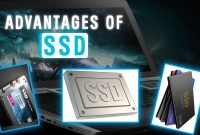What is hardware and it’s definition ,Do you know, what is hardware, what is the function of hardware, what is the definition of hardware – Hardware refers to the physical components that make up the central processing unit (CPU), memory (RAM), storage devices, input/output devices and Computer systems including peripheral devices make up. These components work together to execute instructions and perform operations such as data storage, processing, and input/output.
It is important to have a good understanding of the different hardware components in a computer system and how they work together. This knowledge can help you make informed decisions when it comes to upgrading or maintaining your computer.
Hardware plays an important role in the performance and functionality of a computer system. It is made up of various components that work together to perform various tasks and execute instructions.
In the world of computing, hardware refers to the physical components of a computer or other electronic device. It’s something you can touch, feel and see, and it separates itself from the non-tangible software that runs on it.
Hello friends, my name is Amit and welcome to all of you on our blog Techmirror Hub, in this article, we will know what is hardware, its components, difference between hardware and software, its importance and history of hardware development. So let’s know Is :
Definition of Hardware
Hardware refers to the physical components of a computer or other electronic device. It includes the central processing unit (CPU), memory (RAM), storage (hard drives), input/output devices (keyboard, mouse, and monitor), as well as other peripheral devices such as printers and scanners. Essentially, hardware refers to any part of a computer that you can physically touch.
Hardware Components
The central processing unit (CPU) is the “brain” of the computer, responsible for executing instructions and performing calculations. The memory (RAM) temporarily stores data for the CPU to access, while storage (hard drives) provides long-term storage of data and programs. Input/output devices allow the user to interact with the computer, and peripheral devices add additional functionality.
There are several other hardware components that make up a computer system, including the motherboard, power supply, and expansion cards. The motherboard houses the CPU, RAM, and other components, while the power supply provides power to the system. Expansion cards, such as graphics cards, add extra functionality and capabilities to the system.
Hardware vs Software
Hardware and software are two separate components of a computer system. Hardware refers to the physical components of a computer, while software refers to the non-tangible programs and operating system that run on the hardware.
Software is installed on the hardware, and it runs on top of the hardware to perform specific tasks. For example, a word processing program is a type of software that runs on the computer’s hardware and provides the user with the ability to create and edit documents.
Overview of Hardware
Hardware components play a crucial role in the functionality and performance of a computer system. The CPU is responsible for executing instructions and performing calculations, while memory stores data for the CPU to access. Input/output devices allow the user to interact with the computer, and peripheral devices add additional functionality.
In addition to the basic components, there are many different types of hardware devices available that can be added to a computer system to enhance its capabilities. These devices include printers, scanners, and graphics cards, among others.
Importance of Hardware
Hardware is essential for a computer system to function properly. Without hardware components such as the CPU, memory, and storage, a computer would not be able to perform any tasks or store any data.
In addition, the type and quality of hardware components can greatly impact the overall performance and functionality of a computer system. For example, a powerful CPU and ample memory can improve the speed and responsiveness of a computer, while a high-quality graphics card can enhance its ability to display and manipulate images and video.
Understanding Hardware
To fully understand hardware, it is important to have a basic understanding of how it works. At its core, hardware is designed to perform specific tasks and operations, such as processing instructions, storing data, and displaying information.
Hardware components are connected to one another through a bus, which is essentially a pathway for data and instructions to travel. The CPU communicates with memory to access data, and it also communicates with input/output devices to receive instructions and provide output.
How Hardware Works
Hardware works by executing instructions and performing operations. The CPU is responsible for executing instructions and performing calculations
, while memory stores data for the CPU to access. The CPU retrieves instructions from memory and then executes them, performing operations such as mathematical calculations or data storage.
As the CPU executes instructions, it also communicates with other hardware components through the bus to access data and receive instructions. For example, the CPU may communicate with a keyboard to receive input from the user, or with a monitor to display information.
Types of Hardware Devices
There are many different types of hardware devices that can be added to a computer system to enhance its capabilities. Some of the most common hardware devices include:
- Input Devices: Keyboard, Mouse, Touchpad, Joystick, etc.
- Output Devices: Monitor, Printer, Scanner, Projector, etc.
- Storage Devices: Hard Disk Drive (HDD), Solid State Drive (SSD), CD/DVD Drives, etc.
- Peripheral Devices: Graphics Card, Sound Card, Network Card, etc.
1. Input Devices:
Keyboard
A keyboard is a peripheral device used for entering text, numerical data, and other symbols into a computer or other electronic device. It is an essential component of most personal computers, laptops, and mobile devices. Keyboards come in different shapes, sizes, and designs, but all follow the same basic layout and functionality.
The standard keyboard layout consists of alphanumeric keys, function keys, navigation keys, and special keys such as the Shift, Ctrl, Alt, and Delete keys. The keys are positioned in a QWERTY layout, named after the first six letters on the top row of letters. Some keyboards also include a numeric keypad, media keys, and programmable keys for added functionality.
There are two main types of keyboards:
- mechanical
- membrane
Mechanical keyboards use individual switches beneath each key to register keystrokes, while membrane keyboards use a single rubber sheet to register keystrokes. Mechanical keyboards are known for their tactile feel and durability, while membrane keyboards are known for their affordability and quiet operation.
Ergonomic keyboards are designed to reduce stress on the hands, wrists, and arms during extended typing sessions. These keyboards have a unique design that allows the hands and wrists to be positioned in a more natural and comfortable manner.
Overall, the keyboard is an essential tool for entering data and controlling devices, and the type of keyboard you choose will depend on your specific needs and preferences.
Mouse
A computer mouse is an input device that is used to interact with a computer. It consists of a small handheld device with one or more buttons and sometimes a scroll wheel, and is used to control the movement of the cursor on the screen. The mouse is moved across a flat surface, and the motion of the mouse is translated into corresponding movement of the cursor on the screen.
Most modern computer mice are connected to a computer via a USB cable or wirelessly via Bluetooth. Some mice also include additional buttons and features, such as back and forward buttons for navigating web pages and customizable buttons for specific functions.
The computer mouse is a crucial tool for interacting with a computer, and is used for a wide range of tasks, including clicking, double-clicking, dragging, and scrolling.
- There are several types of Mouse, including:
- Mechanical Mouse: This type of mouse uses a ball that rotates as the mouse is moved, which is then translated into movement of the cursor on the screen.
- Optical Mouse: This type of mouse uses light-emitting diodes (LEDs) and sensors to track movement, eliminating the need for a ball.
- Trackball Mouse: This type of mouse has a ball that is located on the top of the device and is manipulated directly with the hand, rather than moving the entire device.
- Wireless Mouse: This type of mouse operates without a physical connection to the computer and uses either infrared or radio frequency (RF) technology to communicate with the computer.
- Ergonomic Mouse: This type of mouse is designed to reduce stress on the wrist and hand, and often has an unconventional shape that supports the hand in a natural position.
- Touchpad Mouse: This type of mouse is integrated into the touchpad of a laptop or tablet and is controlled by finger movements on the touch-sensitive surface.
- Stylus Mouse: This type of mouse is used with a touch screen and is manipulated with a stylus, rather than the hand.
Each type of computer mouse has its own unique features and benefits, and the best type for a particular user will depend on their individual needs and preferences.
2. Output Devices
Monitor
A monitor is a display device that shows visual output from a computer. There are several types of monitors, including:
- CRT (Cathode Ray Tube) monitors: Old-style monitors that are large and heavy, but have high refresh rates and deep blacks.
- LCD (Liquid Crystal Display) monitors: Thin and light monitors that are widely used due to their low power consumption and affordability.
- LED (Light-Emitting Diode) monitors: LCD monitors that use LED backlights instead of traditional CCFL (Cold Cathode Fluorescent Lamp) backlights, leading to improved color accuracy, contrast, and response time.
- OLED (Organic Light-Emitting Diode) monitors: Monitors that use a different type of LED technology and offer deeper blacks and higher contrast than LED monitors.
- IPS (In-Plane Switching) monitors: LCD monitors that offer wider viewing angles and more accurate color reproduction compared to traditional TN (Twisted Nematic) monitors.
- QLED (Quantum Dot LED) monitors: LED monitors that use quantum dot technology to produce more vivid and accurate colors.
Printer
A printer is a peripheral device that produces a hard copy of documents stored in electronic form. There are several types of printers, including:
- Inkjet printers: These printers use small jets of liquid ink to produce high-quality text and images on paper. They are commonly used for home and small office use and are known for their affordability and color printing capabilities.
- Laser printers: These printers use toner instead of ink and are known for their fast printing speed and high-quality text printing. They are commonly used in office settings for printing high volumes of black and white documents.
- Thermal printers: These printers use heat to produce images on special heat-sensitive paper. They are commonly used for printing barcodes, receipts, and shipping labels.
- Dot-matrix printers: These printers produce characters and images using a matrix of dots and are typically used for printing multi-part forms (such as invoices or carbon copy forms).
- Multi-function printers (MFPs): These printers combine the functions of a printer, scanner, copier, and fax machine in a single device, making them a convenient all-in-one solution for small offices and home use.
- 3D printers: These printers create three-dimensional objects by building up layers of material, such as plastic or metal. They are typically used for prototyping and creating small parts for various industries.
3. Storage Devices
Hard Disk Drive
A hard disk drive (HDD) is a data storage device that uses spinning disks (platters) to store and retrieve digital data using magnetic fields. It is a non-volatile storage medium that serves as the main storage in most computers.
There are two main types of HDDs:
- SATA (Serial ATA): the most common type, used in most desktop and laptop computers.
- SCSI (Small Computer System Interface): used mainly in servers and high-end workstations.
Examples of HDDs include:
Solid State Drive (SSD)
A solid state drive (SSD) is a data storage device that uses NAND-based flash memory to store data. Unlike HDDs, SSDs have no moving parts, which makes them faster, quieter, and more durable.
There are several types of SSDs, including:
- SATA SSDs: similar in form factor to SATA HDDs and offer compatibility with most laptops and desktops.
- PCIe (Peripheral Component Interconnect Express) SSDs: offer higher performance than SATA SSDs and connect directly to the computer’s PCIe bus.
- M.2 SSDs: a compact form factor that fits directly onto the motherboard, used mainly in laptops and small form-factor desktop systems.
- NVMe (Non-Volatile Memory Express) SSDs: offer the highest performance of all SSD types and are used in high-end desktops, servers, and workstations.
Examples of SSDs include:
4. Peripheral Devices:
Graphics Card
A graphics card, also known as a video card, is a component in a computer that generates images, videos, and animations and displays them on a monitor. It performs graphical calculations and rendering and frees up the central processing unit (CPU) from performing these tasks.
There are two main types of graphics cards:
- Integrated Graphics: built into the CPU and are used in entry-level computers or those that do not require heavy graphical processing.
- Discrete Graphics: standalone cards that can be added to a computer and provide higher performance than integrated graphics.
There are two main categories of discrete graphics cards:
- Consumer Graphics Cards: designed for gaming and general-purpose graphics processing.
- Workstation Graphics Cards: designed for professional content creation, engineering, and scientific applications.
Examples of graphics cards include:
- Nvidia GeForce RTX 3080
- AMD Radeon RX 6800 XT
- Nvidia GeForce GTX 1660
- AMD Radeon RX 580
- Nvidia Quadro P2200
Each type of hardware device has a specific function and purpose, and they work together to provide a complete computing experience.
History of Hardware
The history of hardware dates back to the early days of computing, with the development of mechanical calculators and early computers such as the ENIAC. Over time, hardware has continued to evolve and improve, with advancements in technology leading to smaller and more powerful components.
Today, computers have become smaller and more portable, with the development of laptops and smartphones. At the same time, hardware components have continued to improve, with faster CPUs, larger storage capacities, and higher-quality displays.
Hardware Terminology
There is a specific vocabulary associated with hardware that is important to understand. Some common hardware terms include:
- CPU: Central Processing Unit
- RAM: Random Access Memory
- HDD: Hard Disk Drive
- SSD: Solid State Drive
- I/O: Input/Output
- Peripheral: External hardware device
- Expansion Card: Hardware component that adds additional functionality to a computer system
- Motherboard: Circuit board that houses the CPU, RAM, and other components
- Power Supply: Component that provides power to the computer system
Who is the inventor of Hardware:
Hardware, as a concept in computing and technology, did not have a single inventor. The development of hardware components and technologies is the result of contributions from many individuals and organizations over a period of time.
The first computer hardware components, such as vacuum tubes, transistors, and circuits, were developed in the mid-20th century. Over time, hardware has evolved and improved, with advancements in areas such as microprocessors, memory, and storage.
Conclusion
Hardware is a crucial component of a computer system, and it plays a vital role in its functionality and performance. Understanding the different hardware components and how they work together is important for anyone interested in computing and technology.
From the central processing unit to input/output devices, each hardware component plays a specific role in the overall functioning of a computer system. With advancements in technology, hardware continues to evolve and improve, providing us with more powerful and capable computer systems.
What did you learn today?
The article is about hardware in a computer system. Hardware refers to the physical components that make up a computer, including the central processing unit (CPU), memory (RAM), storage devices, input/output devices, and peripheral devices. These components work together to execute instructions and perform operations such as data storage, processing, and input/output.
The article explains the difference between hardware and software, the different types of hardware devices, and the importance of hardware in a computer system. The article also mentions that hardware components can be upgraded and maintained for improved performance. The performance of a computer system is directly related to its hardware components. Additionally, 10 FAQs were provided to provide a better understanding of hardware in a computer system.
[faq id=”1216″]





My name is Pradeep
Good
Your article helped me a lot, is there any more related content? Thanks! https://accounts.binance.com/sv/register?ref=53551167